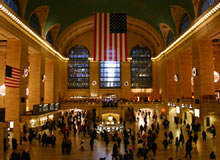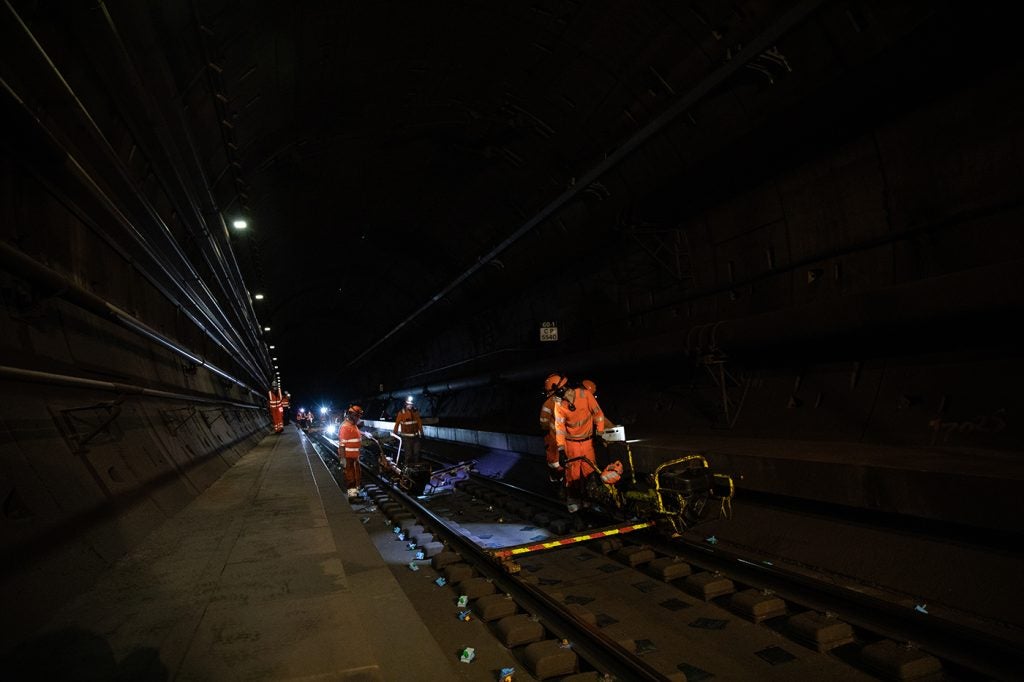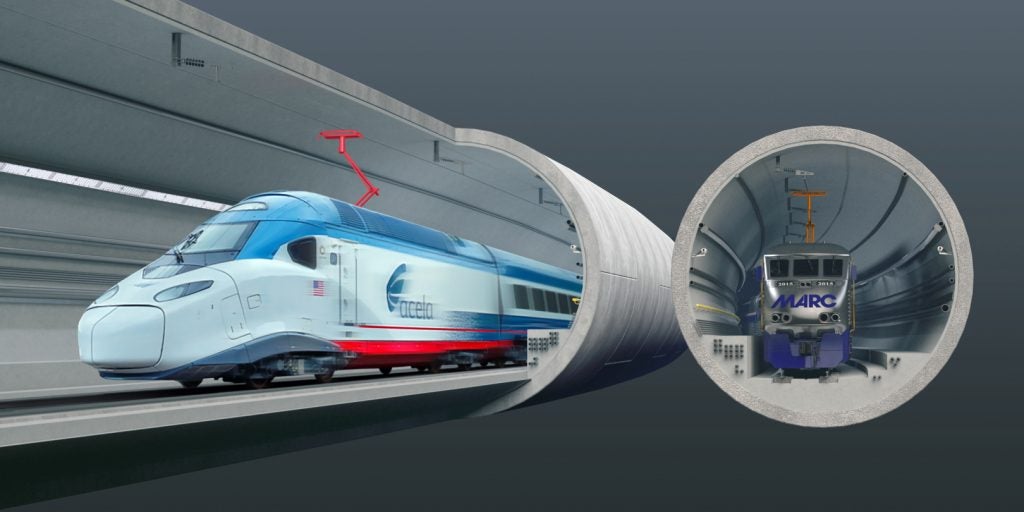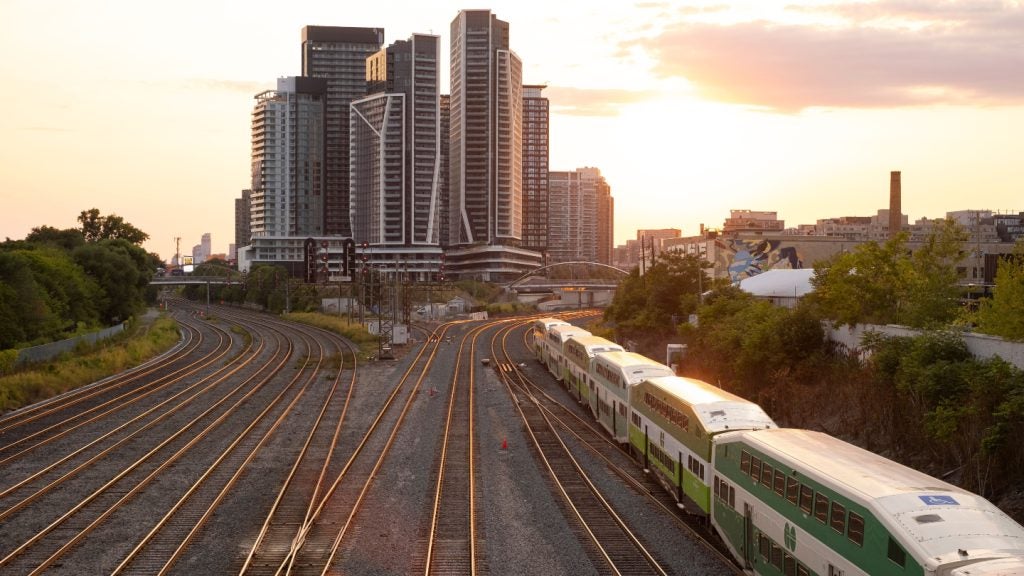
Getting in or out of New York via the Hudson River can be a traumatic experience for drivers and train passengers alike. While the roads are congested, the rail service is often disrupted by delays, which is hardly surprising considering the number of riders has quadrupled to 44 million from just 10 million in 1984. To make matters worse, the only passenger tunnel under the river is nearly 100 years old and only has two tracks – one in, one out.
The solution of adding extra train tracks seems obvious, especially if it means commuters not having to change trains to reach New York. Not only would it improve the commuters’ rail experience, it would also encourage more people to ditch their cars.
However, since New Jersey Transit (NJT) and the Port Authority of New York and New Jersey (PANYNJ) announced their $7.6bn plan to do just that by building a Trans Hudson Express [THE] tunnel, criticism of the proposals has been fierce. Under the banner of Access to the Region’s Core [ARC], the project to date has been beset by problems.
One rail advocate described it as a “fiasco, boondoggle and pork barrel” and in October all 17 Republican members of the New Jersey senate signed a resolution to challenge the legality of one of the tunnel’s proposed funding streams.
Problem – solution – problem
See Also:
So how has such a seemingly straightforward solution to an increasingly troublesome problem become mired in controversy? More importantly, what does it mean for the future of the project?
How well do you really know your competitors?
Access the most comprehensive Company Profiles on the market, powered by GlobalData. Save hours of research. Gain competitive edge.

Thank you!
Your download email will arrive shortly
Not ready to buy yet? Download a free sample
We are confident about the unique quality of our Company Profiles. However, we want you to make the most beneficial decision for your business, so we offer a free sample that you can download by submitting the below form
By GlobalDataOne of the biggest criticisms of the ARC project is that it does not go far enough, either metaphorically or physically. When the feasibility of the project was being studied one of the proposals put forward, known as Alternative G, had twin tunnels connected directly to Penn station, added tracks within the station and tunnels connecting the system to Grand Central.
At the time Alternative G was overlooked in favour of the chosen proposal, known as Alternative P, which lacked the Grand Central connection.
But now rail advocates, including the independent not-for-profit Regional Plan Association, are calling for the extension to the ARC project tunnel to allow New Jersey commuters to reach Grand Central station, in-line with Alternative G.
“As proposed, New Jersey Transit’s project would not improve trans-Manhattan mobility for either residents of the greater New York area or for Amtrak intercity train passengers,” says retired transportation planner Howard Harding.
“The original intent of the ARC project was to permit through-running of regional and intercity trains across Manhattan via Penn and Grand Central Stations.
“These through routings would vastly improve the efficiency and convenience of existing services and reduce congestion within Manhattan, making it easier for both stations to handle greater train volumes.
However, by only connecting to a new small station deep below Penn Station, the new tunnels would exclude intercity trains from their use while precluding extension of tracks to Grand Central Station on Manhattan’s east side. The through-running could therefore not occur.”
Deep underground
When the tunnel is up-and-running in 2017, the number of rush hour trains between New York and the surrounding states will double from 48 per hour from just 23. However, it is their exit point, in a deep underground station below 34th Street, that concerns people like George Haikalis, president of the Institute for Rational Urban Mobility.
“My strongest objection to the scheme is the proposed terminal in Manhattan,” he says. “It will be 450ft from Penn station and 175ft underground. It will add four to five minutes’ travel time just getting out of the station and if you have to transfer to another train at Penn it will be really inconvenient. It adds capacity but not quality. It’s a lousy idea.”
Haikalis says that Alternative G would cost less to build and operate, attract more passengers and in doing so divert more motorists. So why isn’t it being done?
“Alternative G requires the cooperation of Metro North, Long Island RR, New Jersey Transit and Amtrak,” says Harding. “These four parties did not eagerly accept this concept. Each of the operators uses different methods to collect electricity to propel their equipment and may even use differing voltages.
“To the best of my knowledge, the hardware necessary to create operational compatibility exists and is in use around the world. But a combination of hubris, myopia, incompetence and refusal to cooperate stymied further work on the recommended alternative.”
Haikalis agrees that is hasn’t exactly been a case of working for the common good. “The ARC project serves the individual interests of the rail operators,” he says. “New Jersey Transit wants a separate tunnel so they are free from the influence of Amtrak. We’re going to end up spending billions of pounds on a tunnel that maintains the hegemony of the separate agencies. That represents a failure at the highest level and Governor Corzine should be ashamed of himself.”
Those involved in the project point to budgetary restrictions as a reason against extending to Grand Central and highlight that a more efficient commute between New Jersey and New York has benefit in its own right.
“There is not enough funding available to extend the tunnel at this time,” says PANYNJ spokesman Ron Marsico. “However, the project as planned is extremely important because it will double capacity for commuters between New Jersey and Midtown Manhattan.”
Fundraising takes toll
The $7.6bn tab for the ARC project is being split three ways, with the PANYNJ pitching in $3bn, New Jersey Turnpike Authority $1.25bn and the state of New Jersey $1.5bn. It is hoped that the Federal Transit Administration [FTA] will make up the rest.
However, the New Jersey Turnpike Authority’s decision to increase tolls on the roads and use the money to contribute towards the cost of the tunnel has been met with derision by New Jersey politicians, with senate Republican leader Tom Kean introducing a resolution to challenge the legality of the move on 6 October.
“I have introduced a resolution today, as required by the State Constitution, that declares that the diversion of toll road revenue to the construction of the new trans-Hudson rail tunnel is not consistent with the intent of the legislature,” Kean stated. “This resolution begins the constitutionally required process of nullifying the toll revenue diversion.”
Despite the challenge, the PANYNJ remains optimistic that funding will be available.
Another criticism of the ARC project is that the $7.6bn estimation of cost is false. Several leading rail advocates contend that for the THE tunnel to be built, the Portal Bridge Capacity Enhancement Project needs to be completed. This would cost an estimated $1.7bn and put the overall cost of the Hudson rail tunnel nearer $.9.3bn.
“We didn’t succeed in persuading the transit authority that freezing the bridge in its current position and adding out riggers would be a more sensible plan,” says Haikalis. “It would have been more environmentally viable and meant less costs but instead they are pressing ahead with this financial catastrophe.”
However, the PANYNJ denies that they will be caught up by additional costs and have the Portal Bridge project firmly in their plans.
“We are pursuing replacement of the portal bridge concurrently with construction of the tunnel project,” says spokesman Marsico. “We expect to have a final environmental impact study and federal record of decision approved for that aspect of the project by year’s end.”
Knock-on effects
Like all pots of money, the one allotted on improving travel structures in the US is finite. Approval of one project can mean the death knell for another, which is why many New York powerbrokers, including former governor George Pataki, were initially opposed to the ARC project. In short, they thought funds could be better spent improving rail links between Long Island and Wall Street.
Similarly, residents in Ohio believe money spent on the Hudson tunnel would be better spent improving access from there to New York through the Baltimore tunnels.
“Replacing the Baltimore tunnels and building new, high-clearance tunnels across New York City would permit replacement of all of Amtrak’s aged, inefficient single-level equipment with more cost-effective bi-level equipment used elsewhere in the country,” says Harding.
“It would also permit running through bi-level trains from the Midwest and southeast directly to New York City, Boston or Montreal, Canada. This why many of us who reside west of the Allegheny mountains oppose New Jersey Transit’s selfish proposal.”
However, Marsico is quick to point out that the ARC Project will have a strong benefit for the region and has backing from the Federal Transit Administration [FTA].
“We believe the new rail tunnel is one of the nation’s most important infrastructure projects and will help spur economic growth and create jobs. Earlier this year, James Simpson, who heads the FTA, identified the rail tunnel as one of just three projects of national significance in the region.”
THE Tunnel’s future
So what does the future hold for the THE Tunnel? The completion date is pencilled in for 2017 but many predict funding will run out and it will get shunted back to nearer 2050.
“Those closest to the scene are taking all legal steps available to them to block any further work toward implementation of New Jersey Transit’s current proposal,” says Harding.
“These steps include meetings with FTA, Federal Railway Administration, New Jersey and New York State officials to persuade all concerned that this project is unworthy of further consideration. These meetings have produced evidence that these various federal and state officials were largely unaware of the proposal’s deep flaws and excessive costs.
“Amtrak has also expressed its profound concern that the project is inadequate and inappropriate. As of today, adequate funding has not been secured for completion of the project.
“Further, the new tunnels will be nearly worthless without completion of a multi-billion dollar bridge replacement project in New Jersey for which zero funds have been identified.”
In conclusion, Harding does not foresee physical work commencing on the project in his lifetime. “If such work is begun, it will trigger court action seeking injunctions to stop it. Will it come in on-budget? The costs keep escalating by the day as additional flaws in the plan are discovered and inflation takes its toll. I think the appropriate terms here are fiasco, boondoggle and pork barrel.”
However, for those closest to the ARC project, the THE tunnel remains the best solution to an age-old problem.
“We understand there are concerns,” says Marsico. “But the tunnel project we’ve proposed has the best chance of gaining the necessary funding and ensuring we meet the needs of commuters and the ever-growing future economic needs of this region.”






